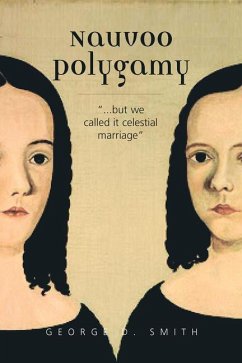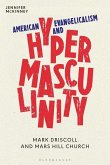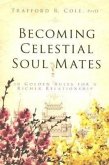When Joseph and Emma Smith arrived in Ohio in 1831, several families offered them lodging, as did the Whitneys, whose five year-old daughter, Sarah Ann, and her eleven-year-old neighbor, Mary Elizabeth Rollins, wouldlater play a role in Mormon polygamy. The Smiths soon moved in with the Johnsons, where Joseph met fifteen-year-old Marinda Nancy. In 1836, seven-year-old Helen Mar Kimball attended school near the Smith home. Eachof these girls, whom Joseph met during the 1830s, would later marry him inthe 1840s gathering place of Nauvoo, Illinois, on the east bank of the Mississippi River. In this thoroughly researched and documented work, the author shows how the prophet introduced single and married women to this new form of "celestial marrige"a favor granted to the elect men of Nauvoo. Through their journals, letters, and affidavits, the participants tell their stories in intimate detailbefore polygamy was forcibly abandoned and nearly forgotten.
Mormon Mormon polygamy began in Nauvoo, Illinois, a river town located at a bend in the Mississippi about fifty miles upstream from Mark Twain's Hannibal, Missouri. After church founder Joseph Smith married some thirty-eight women, he introduced this "celestial" form of marriage to his innermost circle of followers. By early 1846, nearly 200 men had adopted the polygamous lifestyle, with an average of nearly four women per man--717 wives in all. After leaving Nauvoo, these husbands would eventually marry another 417 women. In Utah they were the polygamy pioneers who provided a model for thousands of others who entered into plural marriages in the nineteenth century. Their story is colorful, wrapped in images of people in the next life piloting celestial worlds. Plural marriage was not initiated all at once, nor was it introduced though a smooth progression of events but rather in fits and starts, though defenses and denials, hubris and mea culpas. The story, as told here, emphasizes the human drama, interspersed with underlying historiographical issues of uncovering what has hidden--of explaining behavior that was once allowed and then denied as circumstances changed.
Mormon Mormon polygamy began in Nauvoo, Illinois, a river town located at a bend in the Mississippi about fifty miles upstream from Mark Twain's Hannibal, Missouri. After church founder Joseph Smith married some thirty-eight women, he introduced this "celestial" form of marriage to his innermost circle of followers. By early 1846, nearly 200 men had adopted the polygamous lifestyle, with an average of nearly four women per man--717 wives in all. After leaving Nauvoo, these husbands would eventually marry another 417 women. In Utah they were the polygamy pioneers who provided a model for thousands of others who entered into plural marriages in the nineteenth century. Their story is colorful, wrapped in images of people in the next life piloting celestial worlds. Plural marriage was not initiated all at once, nor was it introduced though a smooth progression of events but rather in fits and starts, though defenses and denials, hubris and mea culpas. The story, as told here, emphasizes the human drama, interspersed with underlying historiographical issues of uncovering what has hidden--of explaining behavior that was once allowed and then denied as circumstances changed.







